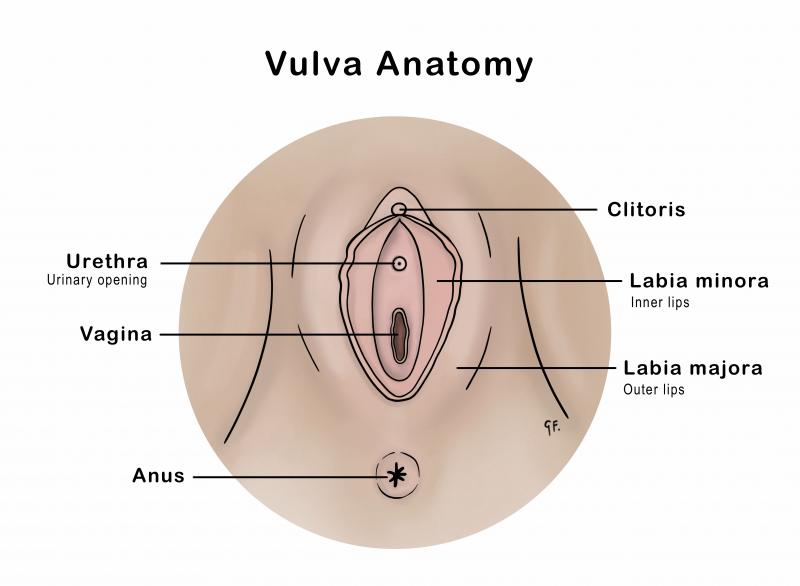Lichen Sclerosus In Children
Lichen Sclerosus In Children
Lichen sclerosus is an uncommon skin condition. It affects males and females of all ages but mainly affects tamariki before puberty.
Key points about lichen sclerosus
- lichen sclerosus is an uncommon skin condition
- it usually affects females and appears before puberty
- lichen scelrosus usually affects the genital skin around the vulva and anus
- lichen sclerosus often needs treatment with steroid creams
- it is important for your child to see the family doctor regularly if they have lichen sclerosus
What is lichen sclerosus?
Lichen scelrosus is a skin condition that generally affects the skin around the vulva and anus. It is uncommon and can not be spread from person to person. It usually occurs in females and develops before they reach puberty.
What is the vulva?
The vulva includes all the outer genitals in females including the vagina and urethra (where wee drains from).

What causes lichen sclerosus?
Lichen sclerosus is thought to be an autoimmune condition. It can run in families. Lichen sclerosus is not an infection and can’t be spread between people.
What are the symptoms of lichen sclerosus?
Lichen sclerosus causes a rash that most often looks like white patches on the skin. The rash can be anywhere on the body but commonly affects the skin around the vulva and bottom. It does not affect the inside of the vagina.
Other symptoms that occur with lichen sclerosus include:
- itch
- pain when weeing
- constipation due to painful cracks in the skin around the bottom
- red and irritated skin (in the beginning) that turns into white, thickened patches of skin later
The general health of tamariki with lichen sclerosus is usually otherwise normal.
When to see a doctor
If you suspect your child has lichen sclerosus, see your doctor. Lichen sclerosus can be diagnosed by inspection. Rarely, a small skin sample (biopsy) may be taken to confirm the diagnosis. It is important that you take your child to the doctor if they show signs of lichen sclerosus.
If lichen sclerosus is diagnosed, your child will need regular yearly checks with the doctor. If it is left untreated, it can cause scarring around the vagina.
What is the treatment for children with lichen sclerosus?
The doctor may prescribe a strong steroid ointment for your child. Steroid ointment can be a successful treatment for lichen sclerosus. The ointment often needs to be used daily at first, but it may be required less often over time.
How long will my child have lichen sclerosus for?
Current research suggests that lichen sclerosus will resolve in 2 out of 3 females once they start having periods. This applies to those with lichen sclerosus around the genital area. However, some tamariki may continue to have lichen sclerosus past puberty.
Vulval skin care in children with lichen sclerosus
Because the vulva can become irritated and inflamed when it is affected by lichen scelrosus, it is important to protect the skin.
Tamariki with lichen sclerosus should avoid using the following:
- bubble baths
- scented soaps or creams
- using or getting shampoo around the vulva area
- talcum powder
- creams that haven’t been prescribed by the doctor
Alternatives that tamariki with lichen sclerosus can use are:
- soap-free wash products
- salt-water baths
- prescription creams and wash products prescribed by the doctor
See the KidsHealth page on vulval skin care for more information
This page last reviewed 31 August 2023.
Do you have any feedback for KidsHealth?
If you have any feedback about the KidsHealth website, or have a suggestion for new content, please get in touch with us.
Email us now